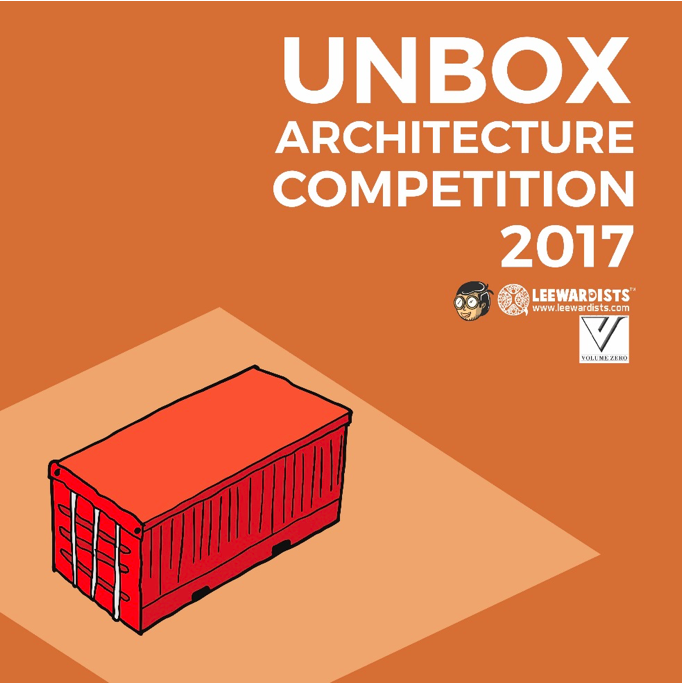There is hardly any architect or architecture student in India, who has not heard about Leewardists. That’s their success. Leewardists uses humor to raise and talk about serious issues about the profession and education. When we first wrote about Leewardists, their journey had just started. But, in the last few years, Anuj Kale through his work has been able to reach out to every architect’s office and every classroom in the architecture institute. Below, we share Anuj Kale’s story, in his own words:
Anuj: We question ourselves, when people ask us who we are as Leewardists! Are we storytellers? Are we the stand-up comedians? Or are we just comic artists trying to narrate the simple stories of the architecture world through our graphics.
There is no right term or sentence to define who we are! Nor do we belong to any particular group. All of us; who see, talk, think and understand about the leeward side of this profession is a part of Leewardists’.
Leewardists started with the idea of people unaware about the dark sides about our profession and the truths left untold. Everything is so dead serious in our fraternity that it is almost wired in everyone’s mind; that professionals who are unapproachable, projects which are talked about in ornamented language and education when consumed with set methodologies is the only way one can excel in architecture. Our profession is meant for the common, then why is it so that we are unable to explain it to our parents, let alone the client?

We address all the elephant’s’ in the room, with a touch of intelligent humor so that it’s conceived by all and not a particular group of people. We do our job seriously so that people can learn to be ‘not serious’ while working, educating, learning or pretty much anything!
AL: At what point of the architecture course or after that, you decided to take up this career?
Anuj:There was no particular day when I got enlightened with the idea. It was a slow cooked idea which started with my ardent love for graphic novels and comics and the idea of narrating stories through visuals. The idea matured as I got out of CEPT as an Urban Designer and took up a job as one. The more I got aware about the things that even people in our fraternity were alien to, the more I worked towards bringing this mere thought to reality.
AL: Can you give some examples how your work is helping the profession or education?
Anuj:The architectural profession for us, includes everybody. From the student body to professionals to even the end user that is the common mass. We have affected each of them in some of the other way. Our comic on Pragati Maidan was used as an awareness model by the eminent architects among students to make them understand the importance of iconic buildings the need of protecting them.
The comic made on Pritzker laureate B.V. Doshi was shared by the faculties to tell about his philosophies and understanding of simple things while studying or practicing architecture.
Our comics has been used by Arch Daily’s founder David Basulto in one of his meetings to explain how content can be created in different and quirkier ways.
Through our workshops and seminars we present our worldview and teach professionals and students to visualize the same ideas differently. A faculty training program conducted by the Council of Architecture, included making faculties aware about the need of change in teaching methodologies and how same mundane things can be taught in a much lighter way, while not compromising on the information or intent.
We get messages from students all around the world about how our comics make them work harder and find the positive sides of the profession. It’s good to see these young minds getting instigated in a positive way and getting encouraged to do better work and make a contribution.
At Leewardists, we make use of wide variety of tools and methods to tell stories, from sketches, to videos and workshops:
Fiction
The comic ‘we don’t need an architect’ was made like a movie plot and instigate the ideas in audience’s mind through fiction and narration so that it leaves a larger impact.Case Comics.
Hathigaon by RMA Architects and Integrated Designs was taken up as an example to view an architectural case study differently and understand the end user in our profession.
Videos
We make design briefs for competitions, and tell how one can visualize them in different form of representation style.
Comical Blog
How journalism and writing articles can be engaging and informative at the same time was represented through this blog.
Reality check/Satire
A single panel comics on existing issues in our field and profession.
AL: You have set an example by choosing an alternative career around the profession, what message would you like to give to the younger generation of architects/designers and students.
Anuj:Architecture as a course is so multi-faceted, that it teaches us so much more than architecture itself! But no one teaches these aspiring students about fusing architecture with the passion that they possess. They think that practice is the ultimate goal! It is not. It can become anything, provided you are willing to take the risk and actually step out of the race to attempt something different! That said, firstly our fraternity needs to loosen up a bit and start accepting and open to different professions! If the profession itself is not welcoming enough, such startups will remain a dream shattered. But then, the young generation should take this as a challenge and have patience to work with their idea and step out in the world with it and be confident to build a living out of it!













